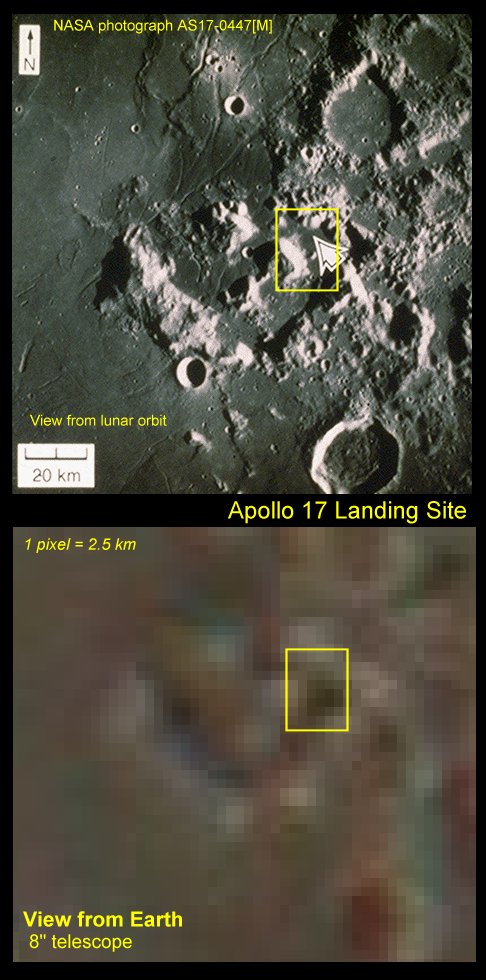
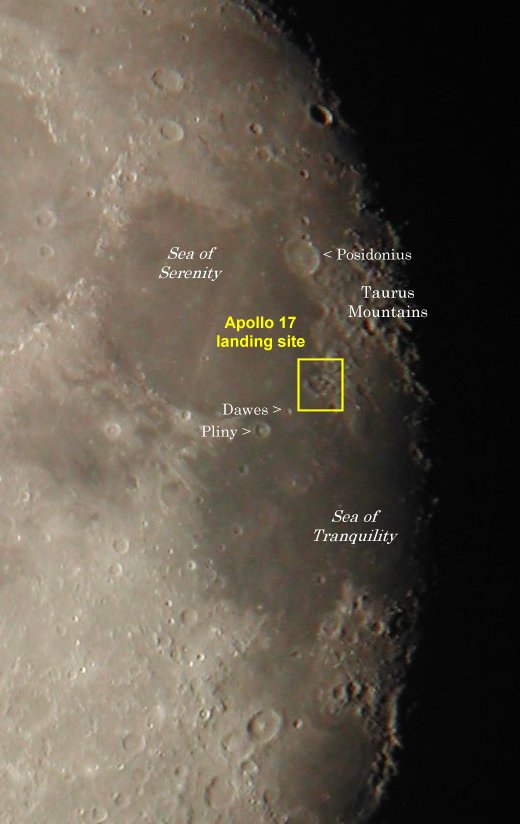
These two images of the Apollo 17 landing site are of the area in the yellow box from the above image. The top photo was taken from lunar orbit. The bottom photo is a zoom in on the earth based 8" telescope image from above. There is clearly less detail in the earth based view. Each pixel, or picture element, is about 2.5 km across. So anything smaller than 2.5 km (1.5 miles) will be lost in just one pixel.

The Apollo 17 astronauts Eugene Cernan and Harrison Schmitt landed in the Taurus-Littrow valley which is only about 10 km wide (6 miles) or about 3 pixels in the earth based telescope view. The lunar module stood 7 meters (23 feet) high and was 9.4 meters (31 feet) wide (diagonally across the landing gear). The lunar roving vehicle (the moon buggy) was appoximately 10 feet long, 7 feet wide, and 45 inches high. The astronauts drove around the moon and covered about 36 km during their explorations. This was the last Apollo mission to the moon and it covered the largest area. This photo shows a map over the Taurus-Littrow valley with the path of the lunar rover.
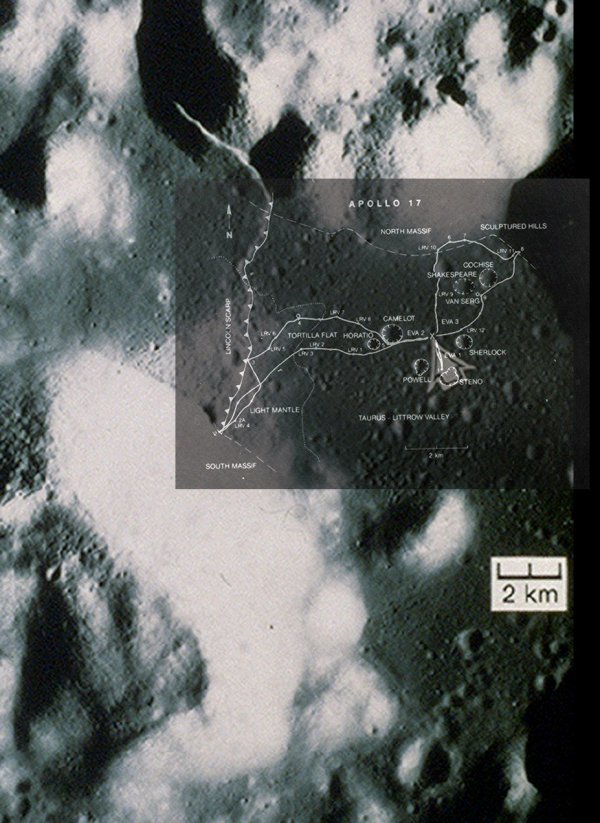
This earth based photo is of the area in the map from the above picture. Only 9 pixels cover the whole landing area. So the U.S. flag, every footprint, every tire track and everything else still on the moon from the Apollo 17 mission is within these few pixels.
![]()
Since a pixel is just one color, anything within a pixel is imposible to see.
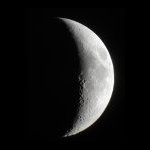
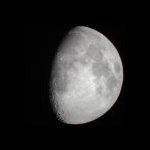 First Quarter to Full
First Quarter to Full
Full to Last Quarter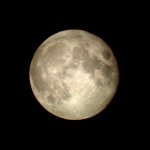
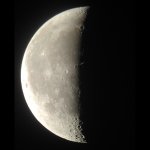 Last Quarter to New
Last Quarter to New